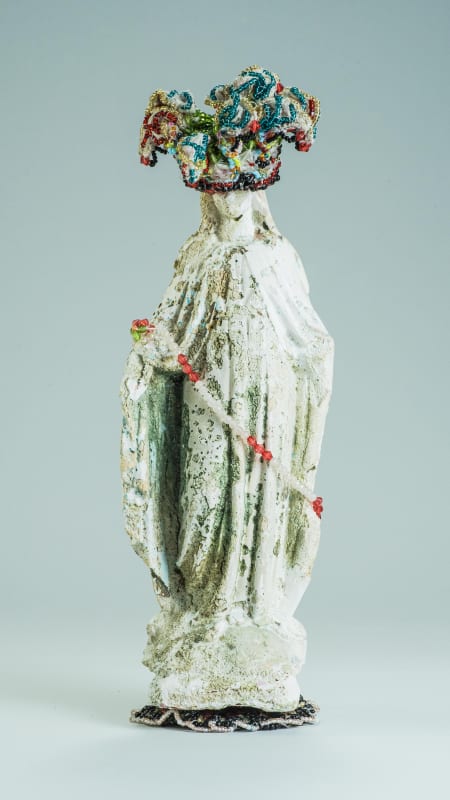Chathuri Nissansala’s artistic oeuvre furthers the inquiry raised by her mother, Shiromi. As a second-generation civilian, a witness to the civil war and its impact on contemporary politics and social culture, her multidisciplinary practice questions the subjects of nationalism, patriarchy, and religion in Sri Lanka. While investigating the complex politics of post-war memory and the subsequent dissemination of post-truths, Chathuri comes to terms with her own identity by revisiting, recovering and bridging the turbulent past of Sri Lanka with her present condition.
For her recent body of works, Chathuri steps into the shoes of an archaeologist scavenging for overlooked, discarded and disfigured figurines of idols at various locations in Sri Lanka that have witnessed mass acts of violence. Her reinterpretation of these material remains from Kochchikade, Dehiwela, Jaffna, Biyagama, Wattala and Kelaniya, sites marked as popular destinations of dark tourism, raise poignant questions about the politics involved in their commodification and mass subversion of the truth.
Considered bad omens or possessed by evil spirits, these allegedly maligned objects are often immediately discarded from any ritual practice and worship at either home or religious sites. Chathuri changes the fate of these broken embodiments by turning them into memorials that testify and heal the political turmoil associated with them. As she invokes motifs and patterns embroidered with colourful beads based on the healing folk rituals of Matara in Sri Lanka, she not only puts a salve on these mutilated sculptures but also, herself and a generation of Sri Lankans who continue to battle with the shifting sands of the country’s political scenario since the last four decades.
Chathuri borrows from her apprenticeship under Somapala Pothupitiya, one of the last descendants of the Navandanne caste, skilled in the costume-making tradition of Matara, that are stitched as a part of exorcist rituals. Her engagement with intricate analogies and technical skills to sew these ceremonial costumes extends their possibility of being redefined in the present domain, blurring the distinction between folk and contemporary art and invoking the rich cultural heritage of Sri Lanka. By embellishing these found, defaced idols with traditional embroidery, her sculptures enact similar ritualistic performances that imbibe them with a new life and a chance to carry the message of peace and hope across the country.
text@OorjaGarg
